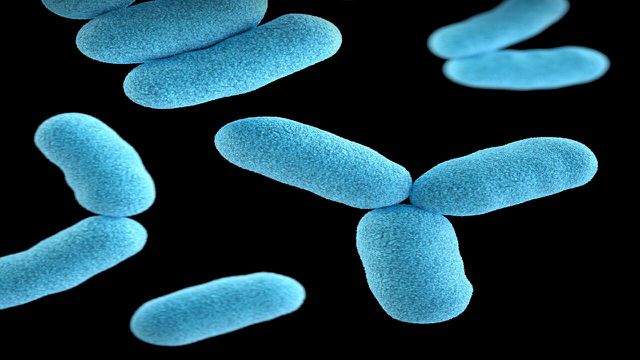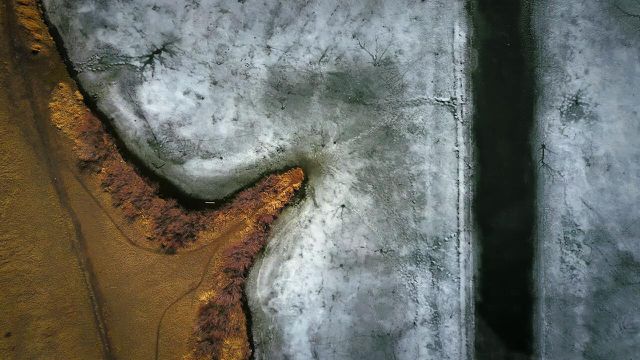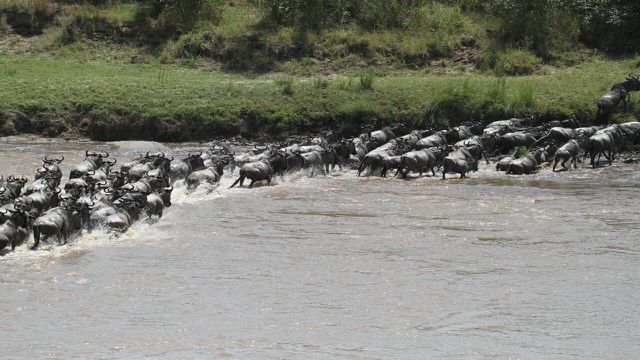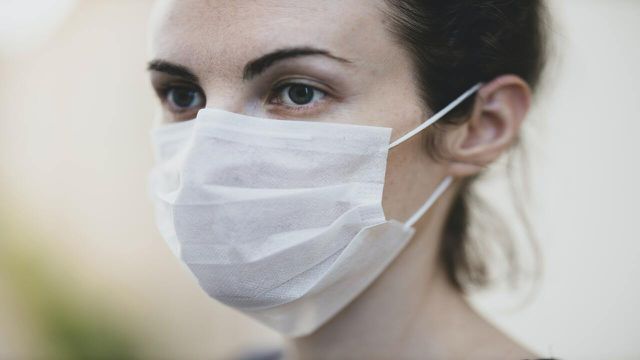
Climate change has long since reached Siberia. For years, scientists have been warning about melting ice and rising sea levels. But the permafrost soils are also thawing more and more – and bring unexpected dangers with them.
Every hour there is a crash at the Batagaika crater in Siberia. Entire blocks of earth fall from the crater walls into the hole in the ground that has formed in the permafrost soil of Siberia.
Permafrost is the term used to describe soils that have been frozen for thousands of years. While the upper layers thaw due to the sun’s rays and freeze again in winter, the deeper layers always remain frozen. At least until now.
Because the Batagaika crater grows every year – it is now one kilometer wide and about 100 meters deep. So he’s the one largest permafrost crater the world, every year it grows another ten meters. And with it the risks for people and the environment.

One sixth of the earth’s surface is considered a permafrost area
One sixth of the total surface of the earth is considered a permafrost area. The frozen ground is sometimes even several hundred meters thick. In the northeastern part of Siberia, the frost even extends to around 1.6 kilometers into the earth’s interior. But what happens when this permafrost thaws?
The layers of permafrost are made up of dead plants and animals that have been there for more than a hundred thousand years. Because they are surrounded by ice, they have not yet decomposed.
When this ice melts, it can be broken down by microorganisms. The greenhouse gases carbon (dry soil) or methane (moist soil) are released, which accelerate global warming. But not only dead plants and animals are frozen in the permafrost. Pathogens are also preserved in the soil.
Eradicated diseases rest in the ice sheets
In August 2016, a twelve-year-old boy died of anthrax in Siberia. Another 70 people had to be treated in the hospital. Anthrax had been eradicated for 75 years. Entire herds of reindeer died because they became infected with the pathogen bacillus anthracis had infected.
The background of the tragedy: like the British Guardian reported that a deceased, infected reindeer was preserved in the frost of Siberia. Permafrost thawed during the 2016 heat wave – and with it the carcass of the reindeer and the pathogens it contains. At least that’s the theory.



Bacteria are resistant pathogens
Viruses and bacteria can survive hundreds of thousands of years when frozen. Bacteria in particular are dangerous because they can form spores under stressful conditions.
Spores are a form of persistence of bacteria in which they reduce all metabolic processes to a minimum. Simply put, a spore is a small bacterium in the bacterium that stops dividing and waits for the outside conditions to improve. In this way, bacteria can survive for hundreds of thousands of years and then reactivate again.
Constant coevolution of humans and pathogens is important for the immune defense
Humans and pathogens go through evolution together. The better the immune system recognizes and combats pathogens, the more the germs change in order to better attack the hosts. An example: after mankind began to use antibiotics, bacteria also adapted: They developed antibiotic resistance.
This type of development is known as coevolution. But what happens when people come into contact with pathogens that have been considered extinct for centuries? Or those with whom he had never come into contact?



Infections from the 18th and 19th centuries may return
The scientists: Prof. Dr. Boris Revich and Marina Podolnaya from the Russian Academy of Sciences wrote in a 2011 study: “As a result of the melting of the permafrost, the carriers of deadly infections of the 18th and 19th centuries could return, especially in the vicinity of the cemeteries where the victims of these infections were buried.”
In fact, scientists have fragments of genetic material in bodies buried in the mass graves on the Alaskan tundra in 1918 discovered the Spanish flu. Other pathogens, such as those for smallpox or bubonic plague, are also likely buried in the permafrost soils of Siberia. If conserving ice layers thaw, the pathogens can attack animals and humans.



Animal infection does not automatically constitute a global threat
According to Dr. Alexander Sokolov, Deputy Director at the Arctic Scientific Research Station in Russia, does not automatically assume a global threat from such pathogens. “If an arctic fox eats infected meat, it will most likely die in two or three days with no time to be far from the epicenter of the infection,” says Sokolov.
However, global warming also affects animal behavior. Many species migrate to colder areas or occupy new ones that were previously too cold for them. There are already dramatic changes due to global warming.
Pathogens can be more aggressive in humans



When animals migrate to warmer areas, they come into contact with other species and new interactions arise. In this way, diseases can easily be transmitted from one species to another.
Also, rapidly transmitted diseases can be very aggressive in humans, as was the case with the Spanish flu. according to studies the influenza virus was a virus that was transmitted directly from birds to humans. The changes caused by pathogen and host interactions were very small and the virus was extremely aggressive for humans.
Effective climate protection is more important than ever



With Corona, we are currently experiencing a pandemic that is severely restricting us and killing many people. We cannot afford any further pandemics. But it looks like there will be some for sure.
But it is still not too late to counter this. We have to adhere to the 1.5 ° target so that the melting of the permafrost does not proceed any further. For this, the CO2-Emission will decrease significantly by 2030. Political measures are required here, such as the CO2Taxation of companies, the switch to renewable energies or the reduction of factory farming. But each and every one of us can also do something about climate change. You can find tips for this here.
Also important: further research to understand the dangers. It is unclear which pathogens are still preserved in the ice of the permafrost soils. But they can be dangerous for all of us.
Read more on Techzle.com:
- Zoonoses: How the corona pandemic is related to the destruction of the animal world
- Global standstill: How the coronavirus is affecting the climate
- 11 things we can learn about sustainability in the Corona crisis
You might also be interested in these articles
-
Frozen food versus canned food: which is better?
-
Solving the climate crisis – giving up consumption or developing green technologies?
-
Quotes to think about: 7 sayings that will never let you go
-
Petroleum: That is why it is so problematic for the environment and the climate
-
Organic palm oil: certified destruction or real alternative?
-
Life cycle assessment of electric cars: how sustainable are electric cars really?
-
Heat properly: the 15 best tips for saving energy
-
Climate heroine Greta: These are her 7 strongest quotes
-
Good idea: rent Christmas trees instead of buying them